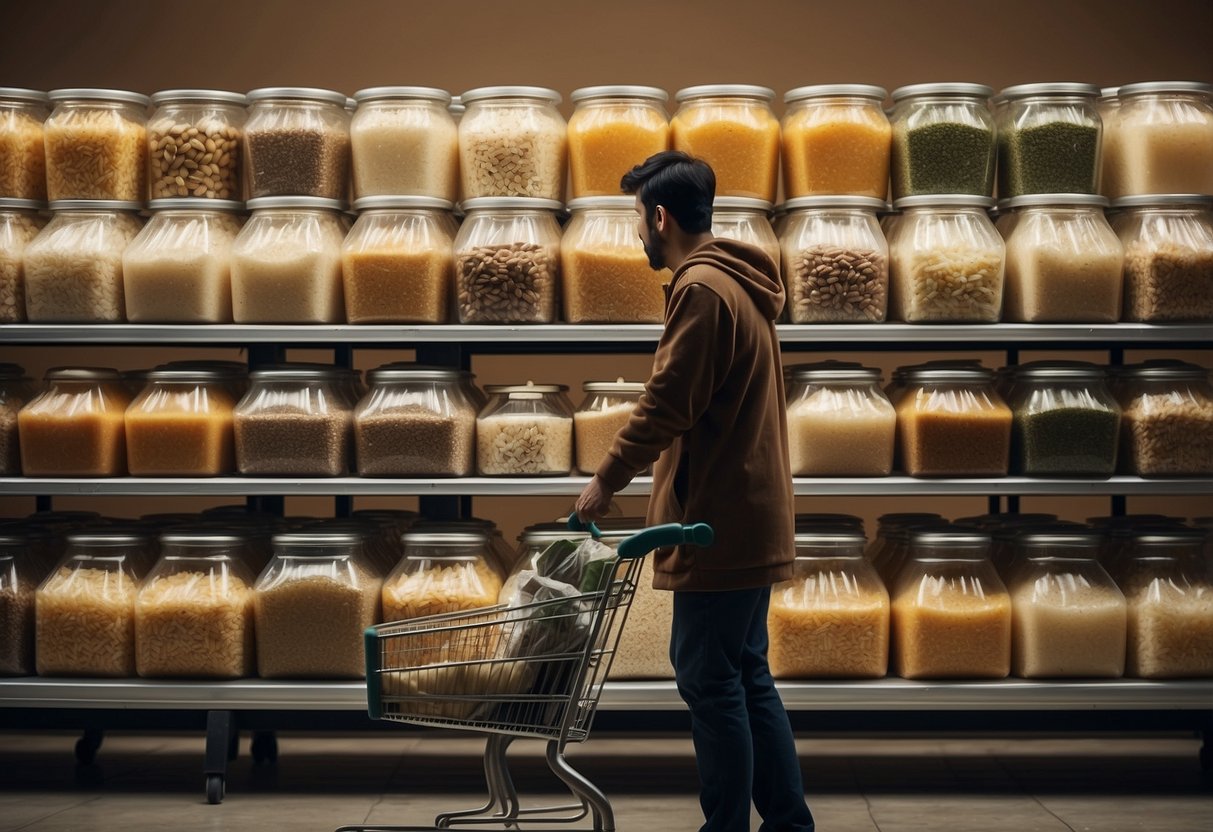
Buying in Bulk Wisely

Buying in bulk can save money and reduce the frequency of grocery trips. However, it’s crucial to assess if it’s truly a cost-effective option and ensure proper storage to avoid waste.
Assessing Bulk Purchase Savings
Before purchasing items in bulk, customers should calculate the cost per unit. This involves comparing the price of a single bulk item against its smaller packaged alternatives. Look for price tags that display the cost per ounce or per item.
Consider whether the bulk item is a staple in the household. Products like rice, pasta, and canned goods, which have long shelf lives and are used regularly, are often worth buying in bulk. Avoid purchasing perishable items in large quantities unless they will be used quickly.
Proper Storage to Prevent Waste
Proper storage is key to maximizing the benefits of bulk buying. Invest in airtight containers to keep dry goods like flour, cereal, and pasta fresh. Using clear containers helps identify items more easily, reducing the chance of forgetting what’s stored.
Refrigerate or freeze perishable items if they will not be consumed immediately. Label containers with dates to track freshness. For items like meat or cheese bought in bulk, consider portioning them before freezing to make future meal preparation easier.
Regularly check stored goods for signs of spoilage and use older items first to minimize waste. By following these storage practices, shoppers can enjoy the cost savings of buying in bulk without compromising quality.
Navigating the Grocery Store
When planning a grocery shopping trip, it helps to have a strategy before setting foot in the store. Knowing where to begin and what to look for can make a big difference in your overall spending.
Start with the perimeter of the store. This is where you’ll find fresh produce, dairy, meats, and other whole foods. These items are usually healthier and less processed, which can also mean better value for your money.
Move into the aisles only after you’ve collected your essentials from the perimeter. Stick to your list and avoid impulse buys, which often come from displays and end caps designed to catch your attention.
Pay attention to unit prices. These are often listed on the shelf tags beneath products. Comparing unit prices helps to identify which products offer the best value, even if the package size or brand differs.
Look for sales and in-store promotions, but be mindful of their actual value. Not all sales are as good as they seem. Sometimes, the difference is minimal, or the cheaper item might not be the best choice for your needs.
Consider buying store brands or generic products. These are often made by the same manufacturers as the name brands but are sold at a lower price. The quality is usually comparable, and the savings can be significant.
Take advantage of loyalty programs and digital coupons. Many stores have apps or websites where you can add discounts to your shopping list beforehand, which can help reduce your total bill at checkout.